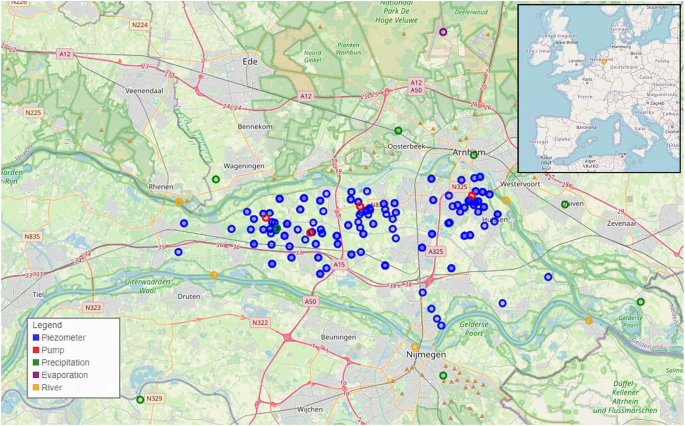Groundwater is a vital resource that sustains ecosystems and communities worldwide. However, predicting its behavior is notoriously complex, as it is influenced by a myriad of hydrological, meteorological, and even anthropogenic factors. In a groundbreaking study, researchers have harnessed the power of Spatial-Temporal Graph Neural Networks (ST-GNNs) to revolutionize groundwater level forecasting. By leveraging the intricate interconnections and temporal dynamics within groundwater systems, this innovative approach significantly outperforms traditional numerical models, offering a transformative tool for sustainable water management. The findings of this research highlight the immense potential of deep learning in revolutionizing environmental modeling and meeting the pressing challenges of groundwater management.
Unraveling the Complexity of Groundwater Dynamics
Groundwater is a vital, yet often overlooked, component of the global water cycle. It provides essential resources for drinking, agriculture, and industrial purposes, while also sustaining ecosystems and regulating surface water flows. However, accurately predicting groundwater levels is inherently complex, as it is influenced by a diverse array of hydrological, meteorological, and even anthropogenic factors.

Traditional groundwater modeling approaches, such as MODFLOW, often struggle to capture the nonlinearity and non-stationarity inherent in groundwater data. These models require extensive parameterization and detailed knowledge of local conditions, making them computationally intensive and challenging to calibrate accurately.
A Breakthrough in Groundwater Forecasting
In a groundbreaking study, researchers from the University of Leeds, University College London, and Deltares have developed a novel application of Spatial-Temporal Graph Neural Networks (ST-GNNs) to predict groundwater levels with unprecedented accuracy. These advanced machine learning models excel at capturing the intricate spatial and temporal relationships that govern groundwater behavior.

Fig. 2
The researchers focused their study on the Overbetuwe area in the Netherlands, a region characterized by a complex groundwater system influenced by various hydrological, meteorological, and anthropogenic factors. By leveraging a comprehensive dataset encompassing 395 groundwater level time series and auxiliary data, such as precipitation, evaporation, river stages, and pumping well information, the ST-GNN model was able to uncover the hidden patterns and interactions within the groundwater network.
Outperforming Traditional Numerical Models
The results of this study are truly remarkable. The ST-GNN model demonstrated significant improvements over the traditional MODFLOW numerical model, particularly in long-term forecasting accuracy and the ability to handle missing data. This is a crucial advantage, as missing or sparse data is a common challenge in groundwater monitoring.

Fig. 3
The researchers conducted a rigorous evaluation of the ST-GNN model, comparing its performance on both synthetic and real-world data. The model’s ability to accurately predict groundwater levels, even in the face of complex nonlinearities and non-stationarity, highlights its potential as a transformative tool for sustainable water management.
Unlocking the Potential of Deep Learning in Environmental Modeling
The success of this study underscores the immense potential of deep learning techniques, such as ST-GNNs, in revolutionizing environmental modeling and addressing pressing challenges in water resource management. By leveraging the powerful capabilities of graph neural networks to capture spatial and temporal relationships, the researchers have paved the way for groundbreaking advancements in groundwater forecasting.

Fig. 4
This research has far-reaching implications, not only for groundwater management but also for a wide range of environmental applications. The ability to accurately predict groundwater levels can inform critical decisions regarding water extraction, drought mitigation, and the sustainable use of this precious natural resource. As the global demand for freshwater continues to rise, tools like the ST-GNN model will play a pivotal role in ensuring the long-term resilience of our water systems.
By showcasing the power of deep learning in environmental modeling, this study serves as a testament to the transformative potential of artificial intelligence in addressing the complex challenges facing our planet. As the field of hydrology continues to evolve, the integration of cutting-edge deep learning techniques, such as ST-GNNs, will undoubtedly lead to even greater breakthroughs in our understanding and management of groundwater resources.
Author credit: This article is based on research by Maria Luisa Taccari, He Wang, Jonathan Nuttall, Xiaohui Chen, Peter K. Jimack.
For More Related Articles Click Here
